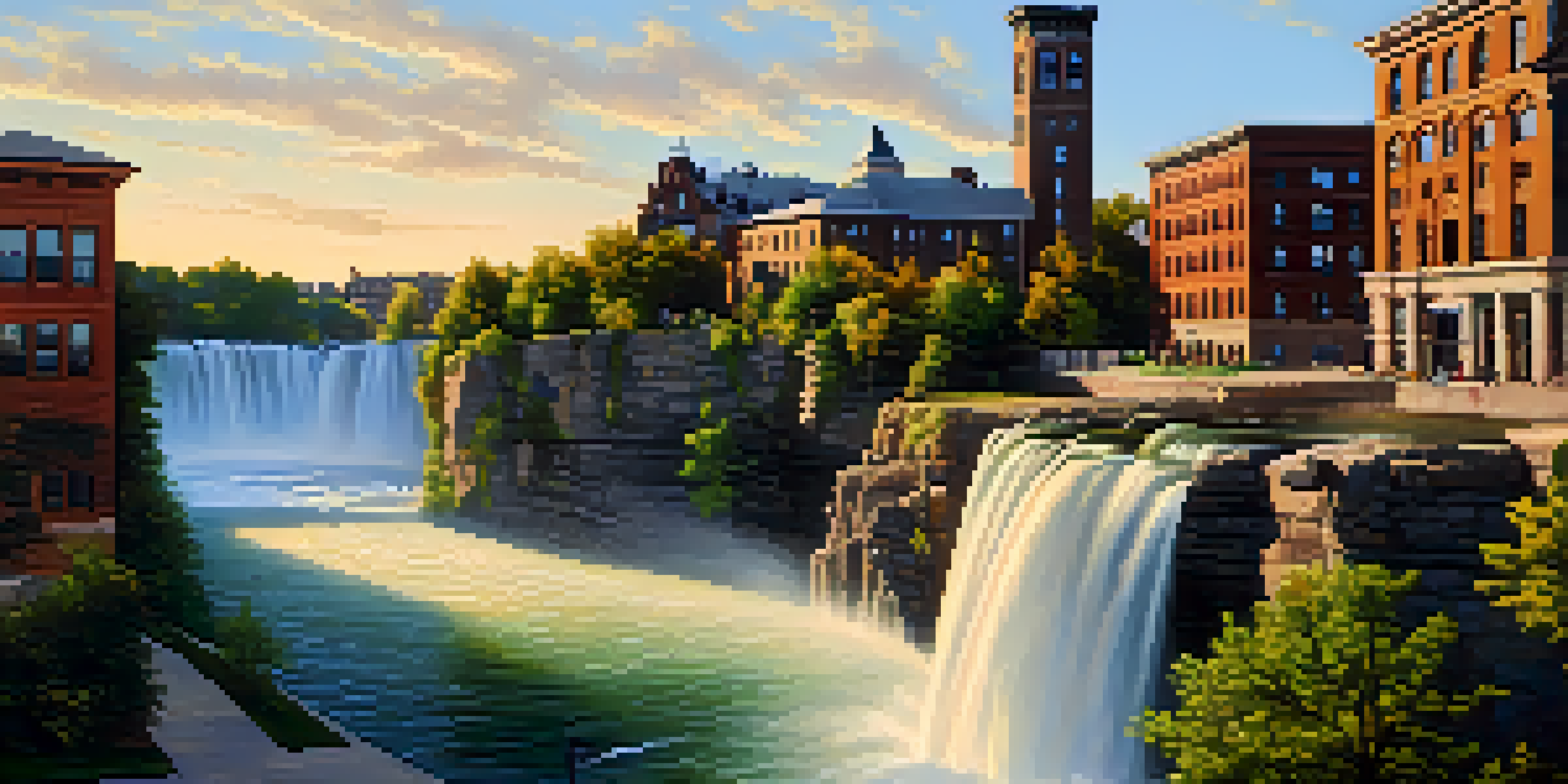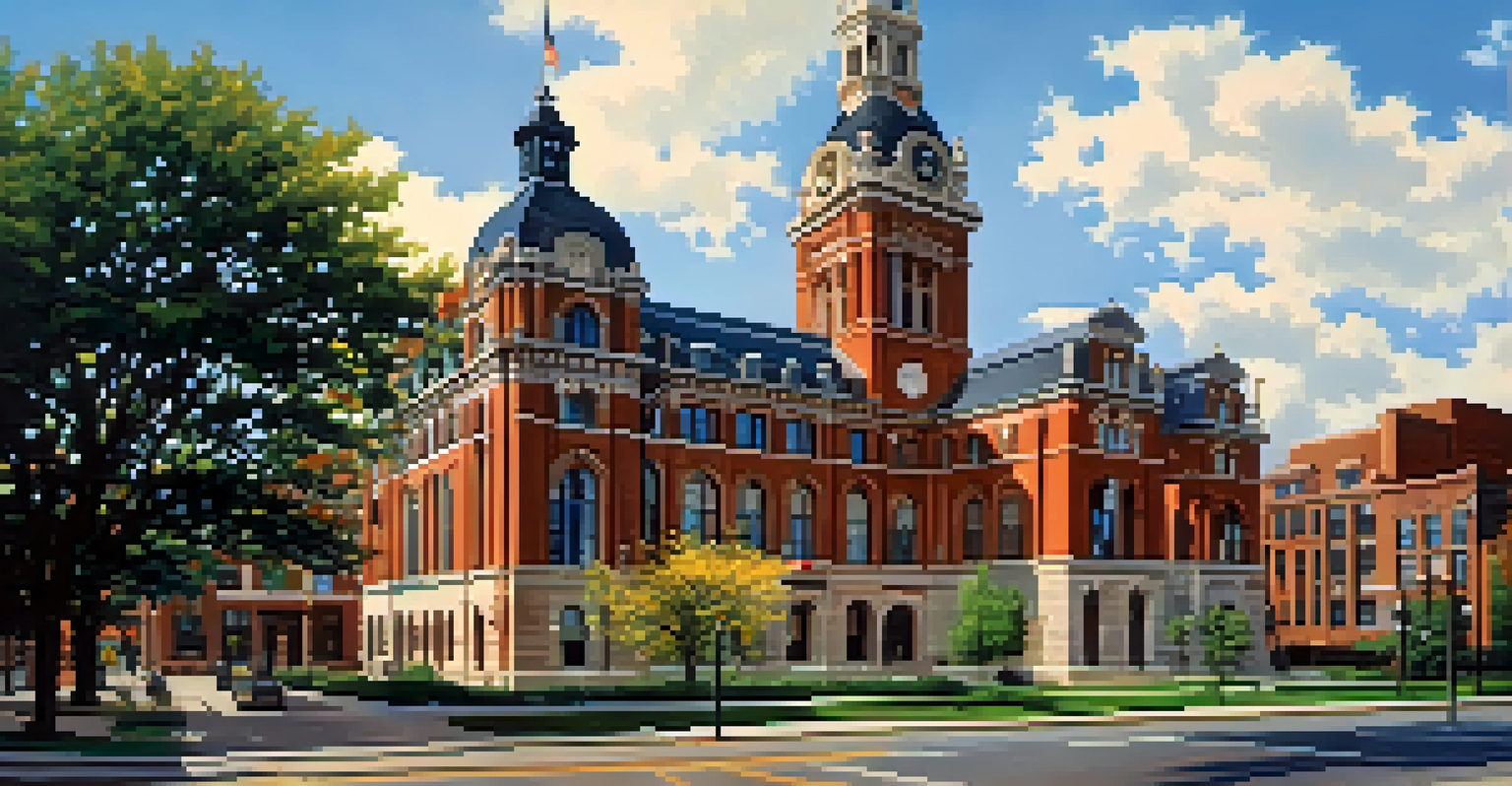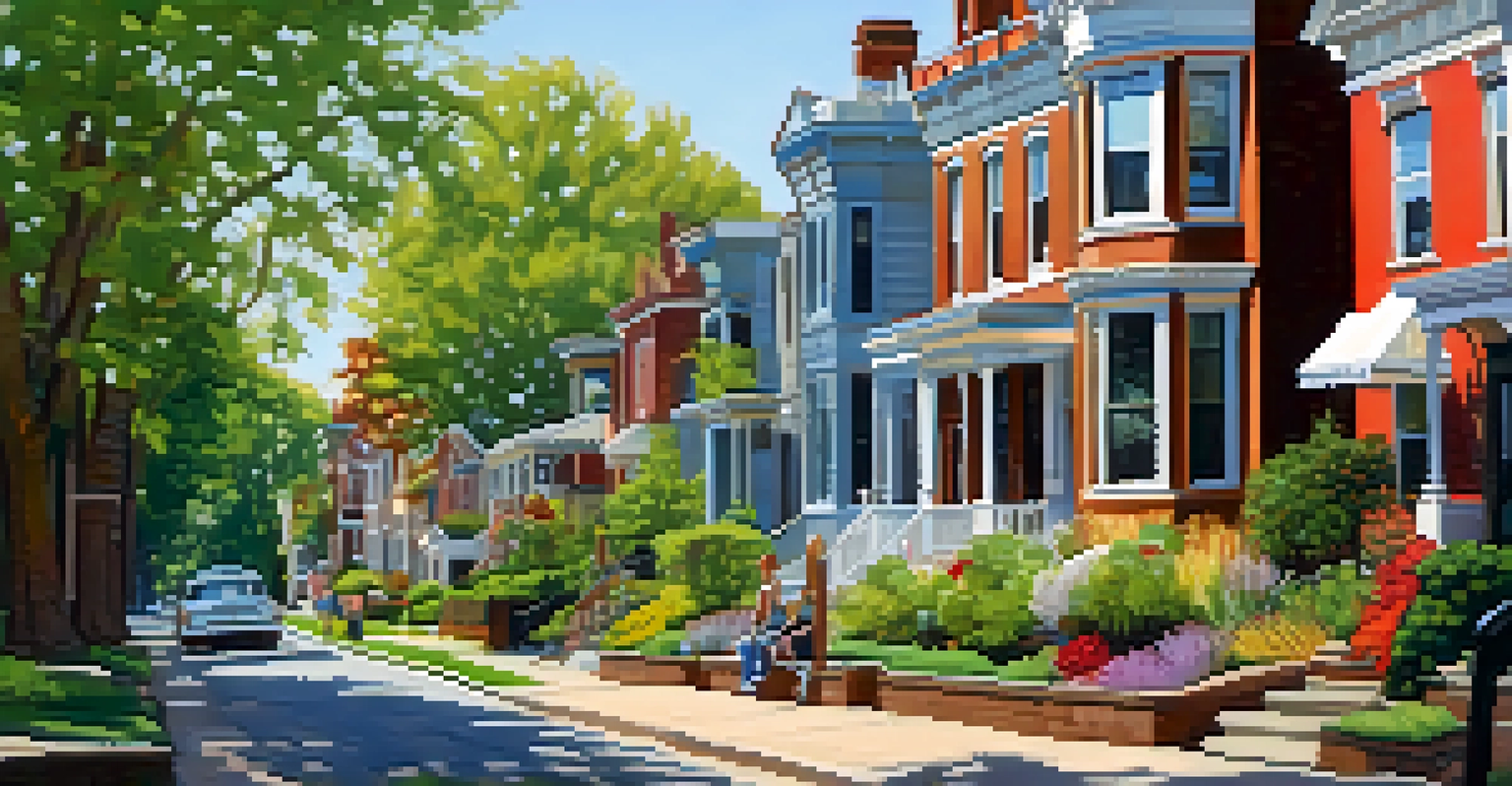Exploring Rochester's Historic Landmarks and Architectural Gems

A Glimpse into Rochester's Historic Beginnings
Rochester, New York, is a city steeped in history, with roots dating back to the early 19th century. Established as a flour milling hub, it quickly grew into a bustling metropolis. The early architecture reflects this rapid expansion, with buildings that tell the story of innovation and prosperity.
The past is never dead. It's not even past.
Walking through the streets of Rochester, you can feel the echoes of the past reverberating through the stunning structures. From the iconic High Falls to the Erie Canal, each site offers a unique glimpse into the city’s origins. These historical landmarks serve as a reminder of the resilience and creativity of Rochester's early citizens.
To truly appreciate Rochester’s history, one must explore these sites firsthand. Each landmark not only showcases architectural beauty but also invites visitors to connect with the narratives that shaped the city. So, lace up your walking shoes and prepare for a journey through time!
The Architectural Diversity of Downtown Rochester
Downtown Rochester is a treasure trove of architectural styles, showcasing everything from Gothic Revival to modernism. Skyscrapers like the Xerox Building stand tall as symbols of innovation, while the historic Powers Building whispers tales from a bygone era. This blend of old and new creates a vibrant urban landscape that captivates both residents and visitors alike.

One cannot overlook the grandeur of the Rochester City Hall, which features stunning terra cotta details and a majestic clock tower. Meanwhile, the Eastman Theatre is a marvel of design, known for its exquisite interior and rich cultural offerings. Each of these buildings adds to the unique character of the city, highlighting its architectural evolution over the years.
Rochester's Rich Historical Legacy
Rochester's history is vividly showcased through its historic landmarks and neighborhoods that reflect the city's growth and resilience.
As you stroll through the downtown area, take a moment to appreciate the craftsmanship and stories behind each structure. The architectural diversity not only reflects Rochester's growth but also its commitment to preserving history while embracing modernity. This dynamic interplay makes downtown Rochester a must-visit for architecture enthusiasts.
The Charm of Historic Neighborhoods in Rochester
Rochester's historic neighborhoods are like living museums, each with its own distinct character and charm. Areas such as Corn Hill and South Wedge showcase beautifully preserved homes that date back to the 19th century. Walking through these neighborhoods feels like stepping into a storybook, where every house has a tale to tell.
Architecture is the learned game, correct and magnificent, of forms assembled in the light.
In Corn Hill, you'll find a mix of Victorian and Italianate architecture, with vibrant gardens that enhance the picturesque streets. The South Wedge, on the other hand, offers a more eclectic vibe with its mix of historic and contemporary homes. These neighborhoods not only provide a glimpse into Rochester's past but also foster a strong sense of community.
Exploring these charming areas reveals the city's commitment to preservation and revitalization. Local efforts to maintain the integrity of these historic homes ensure that future generations can appreciate their beauty. So, take your time wandering through these neighborhoods, and soak in the stories that each corner holds.
The Significance of the George Eastman Museum
No exploration of Rochester's historic landmarks would be complete without a visit to the George Eastman Museum. Founded by the Kodak pioneer, this museum is not only a testament to Eastman's legacy but also a stunning example of early 20th-century architecture. The mansion itself is a work of art, featuring lush gardens and intricate interior designs.
Inside, visitors can delve into the history of photography and film, with exhibits showcasing the evolution of these mediums. The museum's collection includes iconic photographs and historical artifacts that illustrate the impact of Eastman's innovations on modern photography. This makes it a perfect destination for anyone interested in art and technology.
Architectural Diversity in Downtown
Downtown Rochester features a blend of architectural styles, from Gothic Revival to modernism, creating a captivating urban landscape.
Moreover, the museum hosts various events and exhibitions throughout the year, making it a vibrant cultural hub in Rochester. Whether you're an art enthusiast or just looking for a unique experience, the George Eastman Museum offers something for everyone. It's a place where the past and present converge, leaving a lasting impression on all who visit.
Exploring the Architectural Beauty of the Rochester Public Library
The Rochester Public Library is a stunning architectural gem that combines functionality with artistic beauty. Its grand entrance and spacious interiors invite visitors to explore a world of knowledge and creativity. The library serves as a vital community resource, offering a plethora of programs and services for all ages.
Designed with a focus on natural light and open spaces, the library's design encourages a welcoming atmosphere. Inside, you’ll find beautiful reading rooms adorned with unique artwork that inspire a love for learning. It’s not just a place to borrow books; it’s a space where community members gather to share ideas and experiences.
Furthermore, the library's commitment to preservation and innovation ensures it remains relevant in the digital age. With a rich collection of historical materials, it connects residents with Rochester's past while providing resources for future generations. Visiting the library is not just about books; it’s about embracing the spirit of community and education.
The Importance of the Frederick Douglass Statue
Located in Highland Park, the Frederick Douglass Statue stands as a powerful symbol of freedom and equality. Douglass, a former slave and renowned abolitionist, spent a significant part of his life in Rochester, and this statue honors his contributions to civil rights. It serves as a reminder of the ongoing struggle for justice and equality in our society.
The statue is beautifully crafted, capturing Douglass’s strength and determination, making it a poignant site for reflection and inspiration. It’s not just a work of art; it represents the ideals of perseverance and courage in the face of adversity. Visitors often stop to pay their respects and contemplate the impact of Douglass's legacy.
Cultural Hubs Enrich Community Life
Institutions like the George Eastman Museum and Rochester Museum and Science Center serve as cultural hubs that engage visitors in the city's history and innovations.
Surrounded by the natural beauty of Highland Park, the statue provides a peaceful setting for contemplation and education. This landmark encourages discussions about history and civil rights, inviting people to engage with the ongoing conversation about equality. It’s a significant stop for anyone looking to understand Rochester's rich cultural heritage.
The Cultural Significance of the Rochester Museum and Science Center
The Rochester Museum and Science Center (RMSC) serves as a gateway to understanding the region's history and scientific advancements. Its engaging exhibits cover everything from local history to space exploration, making it a perfect destination for families and curious minds alike. The museum's architectural design is both functional and inviting, encouraging visitors to explore.
Inside, you’ll find interactive displays that make learning fun and accessible for all ages. From fossil exhibits to hands-on science experiments, the RMSC strikes a balance between education and entertainment. This approach fosters a love for science and history, inspiring the next generation of thinkers and innovators.

Additionally, the museum often collaborates with local artists and historians to showcase Rochester's rich cultural tapestry. By hosting exhibitions that reflect the community's heritage, the RMSC strengthens its role as a cultural hub. A visit to the museum is not just about observing; it's about participating in the ongoing story of Rochester.